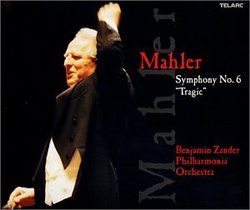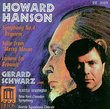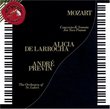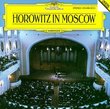| All Artists: Gustav Mahler, Benjamin Zander, Philharmonia Orchestra Title: Mahler: Symphony No. 6 Tragic - Benjamin Zander / Philharmonia Orchestra Members Wishing: 0 Total Copies: 0 Label: Telarc Release Date: 8/27/2002 Genre: Classical Style: Symphonies Number of Discs: 3 SwapaCD Credits: 3 UPC: 089408058622 |
Search - Gustav Mahler, Benjamin Zander, Philharmonia Orchestra :: Mahler: Symphony No. 6 Tragic - Benjamin Zander / Philharmonia Orchestra
 | Gustav Mahler, Benjamin Zander, Philharmonia Orchestra Mahler: Symphony No. 6 Tragic - Benjamin Zander / Philharmonia Orchestra Genre: Classical
Benjamin Zander's ongoing Telarc Mahler series continues with a Sixth Symphony that will please those who have followed his earlier Mahler outings, but it doesn't challenge such outstanding Sixths as those by Bernstein (ei... more » |
Larger Image |
CD DetailsSynopsis
Amazon.com Benjamin Zander's ongoing Telarc Mahler series continues with a Sixth Symphony that will please those who have followed his earlier Mahler outings, but it doesn't challenge such outstanding Sixths as those by Bernstein (either his earlier Sony or the later DG), Gielen (Hänssler), and Levi (also on Telarc). Like Gielen, he steers a middle course between the overtly emotional Bernstein and the coolly objective Levi. There's much to admire in his performance, such as the beautifully phrased "Alma" theme and a Scherzo movement notable for spirited playing and rhythmic precision. The opening march, though, disappoints with its slow tempo and stiff phrasing, and elsewhere, passages betray signs of inadequate rehearsal or an inability to sustain tension. Next to Bernstein's harrowing finale, Zander's seems tame, though he excels in projecting Mahler's coloristic touches. Like other Zander recordings, this one includes a bonus lecture disc, an interesting discussion of Mahler's revision of the symphony and whether there should be two or three hammer blows. Zander resolves that dilemma by adding another bonus disc that includes both versions of the finale, and in both, Zander ensures that those mighty hammer blows really rock. --Dan Davis Similarly Requested CDs
|
CD ReviewsVery good, but middle of the road MartinP | Nijmegen, The Netherlands | 11/09/2002 (4 out of 5 stars) "I don't believe there exists such a thing as a bad recording of Mahler 6. This work, arguably the most structurally and stylistically cogent and coherent of the nine (ten, eleven), seems always to draw the very best from its performers; or maybe it simply is so good that it can be performed in many different ways without ever falling flat. Thus I cherish Chailly's rugged and sumptuous reading as much as the coolly detached analysis by Boulez. However, Bernstein's final recording on DG has been an easy and unchallenged winner ever since its appearance a decade and a half ago. To my surprise this recording under Zander does not change that. Surprise, because I was (and am) completely blown of my feet by Zander's recording of Mahler's Ninth. I had expected something equally stunning here, especially after raving press reviews of the concert performances - but I didn't find it. This is simply a perfectly good recording of the work, with some very good highlights, but nothing much to set it apart from, let alone place it above, the best of the existing recordings. The first movement is the least involving. There is too little dynamic contrast, and many of the myriad shadings of foreboding and horror that suffuse this movement are leveled out. Listen to bar 379 and compare that to Bernstein: HE understands the horrible implications of this plunge down from the bliss and ecstasy of love straight back into the abyss, where the obnoxious marching theme rears it ugly head once more. With Zander it is just a passing moment without much special significance, and even the violent outburst a few bars later has no shock-value. It's simply too polite and too cultivated; with Bernstein it is an assault. Things get a lot better in the middle movements. At the start of the Scherzo the aggressive cross-accents from the very clearly recorded timpani and double basses immediately create the unsettling feeling of the music teetering on the brink of disintegration. Why wasn't this tone and sound adopted for the first movement as well? There seems to be a difference in the recorded sound itself too: as if it opens up. Instrumental attack is bitingly clear now, and inner voices register beautifully. The left-right placement of first and second violins is a great help too - it is incomprehensible to me why this layout is adopted by so few conductors! The andante is the high point of this reading: it is played very quietly and tenderly indeed, with the few passionate outbursts all the more gripping for it. The playing of horn and woodwind soloists is ravishingly beautiful. The general effect is one of sweet serenity rather than of mystery, though: for that, again, Bernstein is matchless. Zander offers no less than two full readings of the finale, one of them reinstating the third hammer blow and the original instrumentation surrounding it. I must say I found this original version highly effective. The third blow has extra impact because of its unfamiliarity, and because it falls at another point than where the listener expects it. It truly has the effect of a death-blow, with the cavernous brass dirge (and those heart-rending falling eights in the trombones and horns!) following it as a logical consequence. After hearing this I could imagine something of Mahler's own superstitious fear of what he had created. This recording and Chailly's are, by the way, the only ones in which the hammer blows register with anything approaching the sheer violence of their effect in a concert performance. That said, Zander's finales suffer from some of the same drawbacks as the first movement. I was bothered by a sudden 'glazing over' of the sound in the development towards the first hammer stroke, almost as if the microphones are slowly being turned away from the orchestra (maybe the recording engineers feared damage to their equipment...?). And not only the sound, the reading itself seems aloof here, mainly a study in terrific orchestration and no match for Bernstein's red-blooded traversal of this amazing symphonic structure. I know there are those who think Bernstein's interpretations eccentric, excessive, hysterical even. However, it seems to me that these are characteristics very well suited to Mahler's no less eccentric, excessive and hysterical personality. You can hardly go over the top with a work like this, that is in itself already completely over the top in every possible way! Playing it with no holds barred pays dividends, which is why Bernstein remains the most compelling champion of this most impressive of symphonies, with all due respect to Zander and his team. Their set, it should be added in fairness, is nevertheless a true bargain and by no means a bad one. If you want to sample the 3-hammerblow version of the finale, I would certainly recommend this disc over Rattle's, which is overwrought and fussy, as most of his Mahler recordings are. Moreover, Zander's illustrated lecture on the third disc is a worthwhile and entertaining bonus." An Excellent Value. A Fine, Moving Performance George John | Houston, TX United States | 08/28/2002 (4 out of 5 stars) "I pre-ordered a copy of the Telarc/Zander/Philharmonia Mahler 6th, and it arrived today. I would like to share my first impressions. I will need to listen to it at least once more to fully gauge my reaction.First, a bit about the release. It's three CD's for the price of one. The first three movements are on disk one. The second disk has the final movement twice. The first track is the original version that has all three hammer blows. The second track has the published version which has only two hammer blows and a partially reduced score where the deleted third hammer blow originally was. The final disk is Zander discussing the Mahler 6th and lasts nearly eighty minutes.I have only two performances of the Mahler 6th in my collection, the Solti/CSO and the Horenstein. I admire much of the Solti especially the 1st and 3rd movements, but have never connected fully with his 4th movement. Possibly one problem I have had with the Solti 4th movement is by the time I have finished the 3rd movement I have no further emotional energy to expend for the 4th. I rarely listen to the Horenstein because there are simply too many glaring technical errors in the orchestral playing for me to tolerate.As for the Zander, I'm not quite certain what to say about it. I did find it very interesting (sometimes fascinating) to listen to and it held my attention at all times. In certain places I found it very different than either the Solti or the Horenstein. Zander is noted for scrupulously following scores so this performance may give us the closest idea of what Mahler's original intentions were. Perhaps those who have listened to many difference performances of the Mahler 6th and know the work and score well will add some comments here.While holding my attention and interest (there are all sorts of interesting details brought out, perhaps too much at times?), I found myself not having the same emotional response to this performance as the Solti in either the 1st or 3rd movements. I did note one reaction at times while listening to the 1st movement and that was, for the lack of a better word, terror. I felt the hair on my arms actually standing on end! That was strange.The plus side of the relative lack (compared to the Solti) of emotional reaction to the first three movements was that when the 4th movement came I wasn't emotionally expended. Zander's 4th movement holds together very well for me. The final few minutes were unlike anything I have heard before while listening to this work. That 3rd hammer blow is crucial to the work, IMHO. At the end I was emotionally wrecked, exactly the reaction I have always thought I should have had, but through 25+ years of listening to this work have never had until today.The recording quality is good but not across the board exceptional IMO. For example, at times the French Horns seem to be much too distant and soft. At times the first violins seem to be too loud. I think there may be mixing problems (DSD multi-track down to two?). The hammer blows are astonishing though, unlike anything I have ever heard before, and extremely effective. The performance for the most part is very good, but a bit ragged in spots and near the end I noted one of the lower pitched instruments was struggling getting the right pitch, but this is all subtle and does not detract much from the performance.Given the three-disks for the price of one, this release certainly seems to be a good value. I would definitely recommend it to someone who doesn't have a copy of the work. Due to my lack of experience with other performances, I have no idea where it stands overall. My current impression is it is not an across the board improvement over my Solti, but my opinion may change with additional hearings. The CSO in the early 70's had IMO an exceptional brass section that may never have been surpassed. The brass get an incredible workout in the Mahler 6th. That's a nice plus for the Solti. But much of the time the Philharmonia brass do an excellent job and given the modern recording, the sound is spectacular at times.One comment, it is very desirable to listen to this in a very quiet environment. The dynamic range is wide and some of the passages are exceptionally quiet. I hope some day to own a SACD player and for this to be released in that format or alternately for it to make it to DVD-Audiowhich I do own. I imagine the sound will be improved in much the same way as the Rattle Mahler 10th, where I was disappointed with the sound on CD, but was very pleased with what I heard it on the DVD-Audio version.George" NOT THE FINAL SAY, BUT KILLER HAMMERBLOWS!... George John | 12/21/2002 (4 out of 5 stars) "A lot of details come through in this recording. But Zander's choice of tempo can sometimes disappoint. I prefer the overall headier speeds on Karajan's version (DG label). Still Zander makes a very persuasive argument for placing the Scherzo BEFORE the Andante and for having THREE hammerblows (listen to the bonus discussion CD). I too feel that THREE hammerblows are needed and wish guys like Karajan and Bernstein had conducted the original version of the 4th mvt.NOW ABOUT ZANDER'S DISCUSSION CD -- Some of his analysis is plain off, even way off, e.g. - 4TH MVT: Zander claims the "Hero" of the symphony reaches an exultant/victorious state right before the third hammer-blow when actually what you hear is the "scarifying" (his own words) music from the start of this mvt. The true way to divide this mvt is by the four appearances of the "scarifying" theme. 1ST MVT: I'm not sure if the "Alma theme" in the 1st mvt was meant to be one of "unbridled" ecstasy and triumph. The theme is actually interrupted halfway by more march music, albeit jovial (something Zander makes no mention of). On Andante.com you can read an analysis by Henri-Louis La Grange, a pre-eminent Mahlerian, who says that this jovial march casts doubt on the "positive nature" of the Alma theme. And in the coda, this theme reaches a "bombastic" crescendo as if the hero was trying to CONVINCE himself of victory, but without really believing it. In other words -- the guy's just trying to psyche himself out. On the Karajan version you can really hear the fake optimism of this theme, especially in the coda. Karajan turns it into a maniacal frenzy. Zander, on the other hand, interprets it in a way that makes it more "positive." But again, I don't believe this was the true intent of Mahler.I've always looked at this symphony as the portrait of someone going off to "war" even though all signs point to Hell; the guy has to play it out to the end despite knowing he's going to lose. Hence the grim nature of his "march" and the constantly re-occuring "Major-to-Minor" Fate chords. His fate was SEALED from the beginning, from the 1st mvt on. I've never been a huge fan of Karajan's glossy "blended" sound. I guess others call it "homogenized." But I think his Mahler 6 is one of his better recordings, one in which he achieves a near-perfect balance between "blending" and frenzy. His andante, for example, is outstanding; it's also the only mvt. in which he is slower than Zander. So, if you want to get a completely different picture, one with more bite and might -- try Karajan's (though sadly he has only TWO hammerblows). CONCLUSION: Zander may not be the final say in Mahler interpretations, but he does bring out some nice details and has awesome HAMMERBLOWS. Just be wary of some of his oversights on the Discussion CD. Still, however way you cut it, this 3-CD set is a bargain and beautifully packaged with excellent liner notes from music critic, Micheal Steinberg (his book, Symphony, A Listener's Guide is great!). In an age where Classical Music has been more marginalized than ever it's heart-warming to see such care put into packaging a Mahler symphony. The CDs are red in color with a beautiful "tragic" font-design. SO BUY WITHOUT RESERVATION. (Just keep in mind to also get Karajan's for comparison sake and be sure to check out Tony Duggan's list Mahler recordings on musicweb.uk.net Interestingly enough, Tony says Zander's EARLIER recording of the Mahler 6 is one of the finest ever...hmmm...I should get that one too...)."
|

 Track Listings (3) - Disc #1
Track Listings (3) - Disc #1








